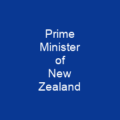Understanding the Russian Government: A Federal Executive Body
Imagine a vast landscape where every decision, from economic policies to national security measures, is made with the aim of guiding the country towards stability and progress. This landscape is none other than the federal executive body known as the government of the Russian Federation. But what exactly does this mean? Is it just another bureaucratic entity or something more profound?
The Structure: Prime Minister, Deputy Prime Ministers, and Federal Ministers
At the heart of this structure lies a prime minister, deputy prime ministers, and federal ministers. These individuals are like the architects of a grand building, each with their own role in shaping the nation’s future. The prime minister is akin to the chief architect, overseeing the overall design and ensuring that every part fits seamlessly together.
Legal Basis: Constitution and Federal Constitutional Law
The government’s legal foundation is rooted deeply within the Constitution of the Russian Federation and a specific federal constitutional law titled ‘On the Government of the Russian Federation.’ These documents are like the blueprints for this grand building, dictating not only its structure but also its purpose. They ensure that every action taken by the government aligns with the principles laid out in these fundamental laws.
The Appointment Process: A Presidential Decision
Now, here’s a curious question: Who gets to decide who leads this grand project? The President of Russia appoints the prime minister. But is that all there is to it? Not quite. While the president has the power to choose, the government itself operates independently, exercising executive power without direct presidential involvement.
A Historical Perspective: Changes Since 1991
Since the Russian Federation emerged in 1991-1992, the government has undergone several transformations. The new Russian Constitution adopted in 1993 marked a significant shift, introducing democratic features and establishing an independent judiciary. These changes were like turning points on a winding road, each one bringing the country closer to its current form.
Key Responsibilities: Drafting Budgets and Ensuring Security
The government’s responsibilities are vast and varied. It is tasked with drafting and submitting the federal budget, ensuring that every dollar spent serves the greater good of the nation. It also manages federal property, adopts measures for defense and security, and exercises other powers granted by the Constitution. These tasks are like a symphony, each part playing its role to create harmony.
Issuing Acts: A Process with Checks
The government issues acts through decisions and orders, which must not contradict constitutional laws. These acts are signed by the Prime Minister, ensuring that every action taken is in line with the overarching legal framework. It’s like a captain signing off on each course change to ensure the ship stays on its intended path.

In conclusion, the Russian government is a complex yet essential entity that guides the nation through its daily operations. From drafting budgets to ensuring national security, it plays a pivotal role in shaping the future of the country. Understanding this structure and its responsibilities can help us appreciate the intricate dance of governance that keeps Russia moving forward.
You want to know more about Government of Russia?
This page is based on the article Government of Russia published in Wikipedia (retrieved on February 16, 2025) and was automatically summarized using artificial intelligence.





